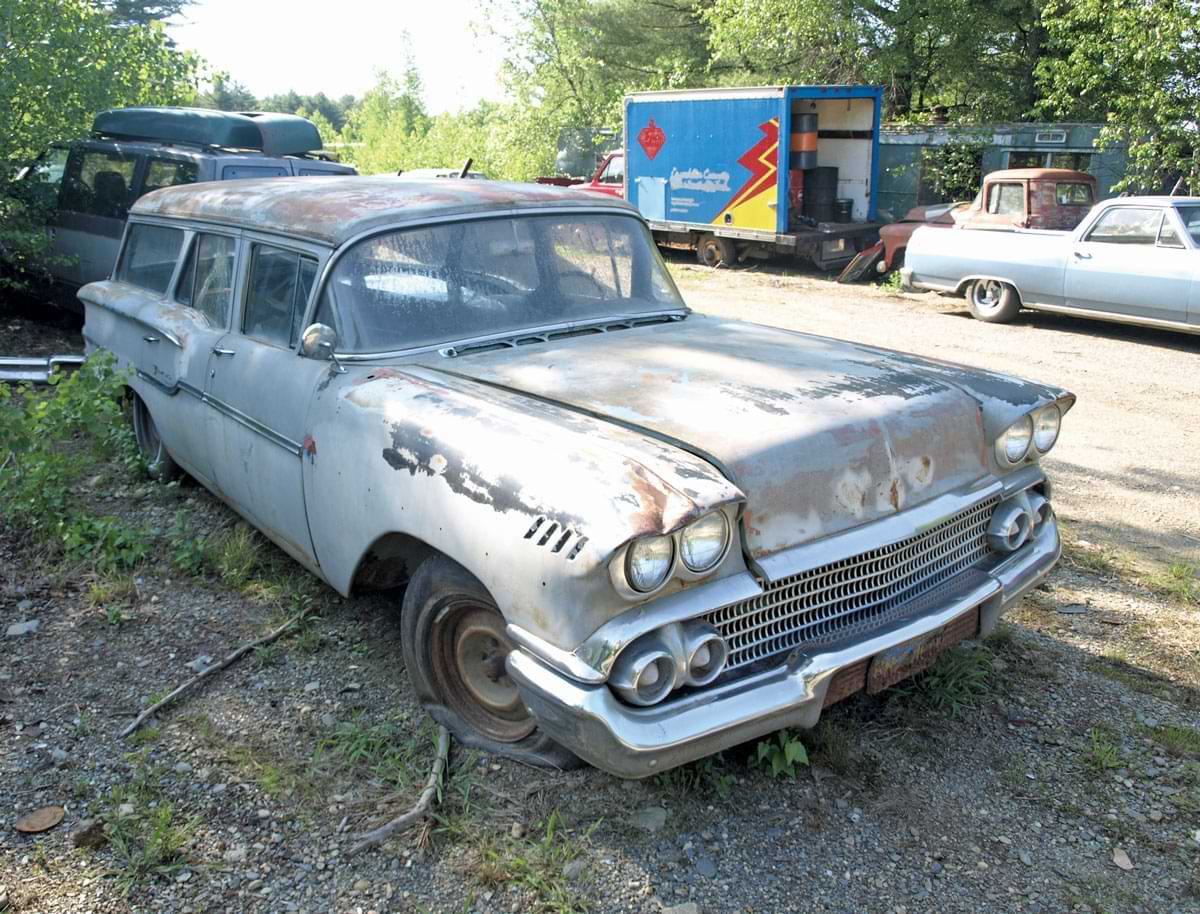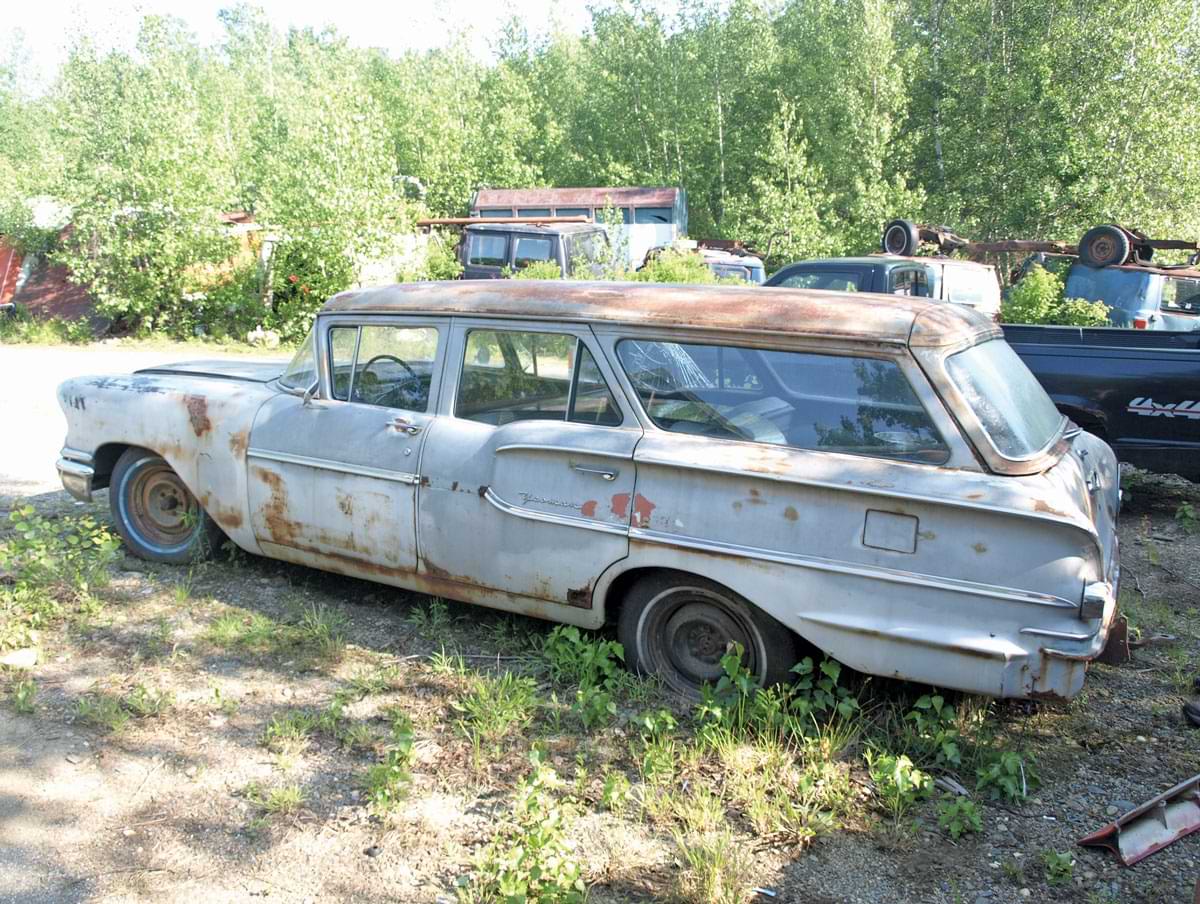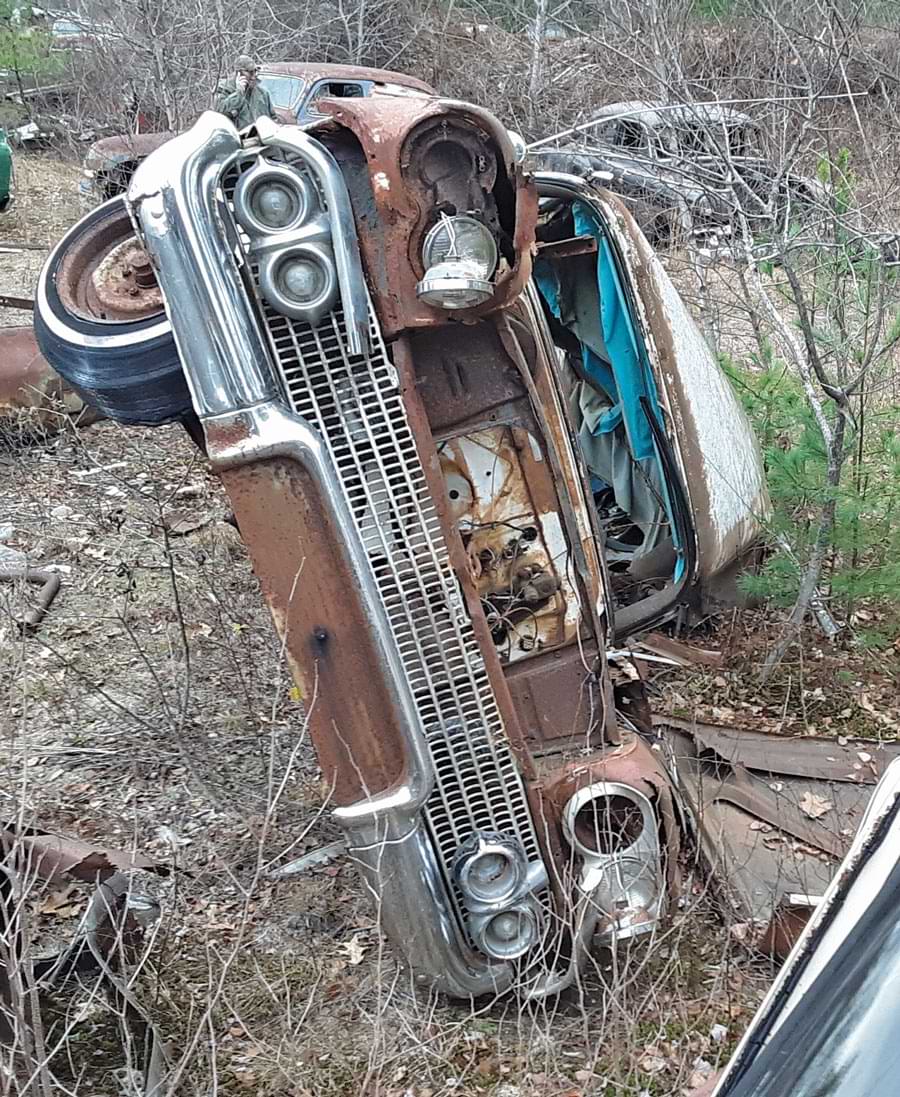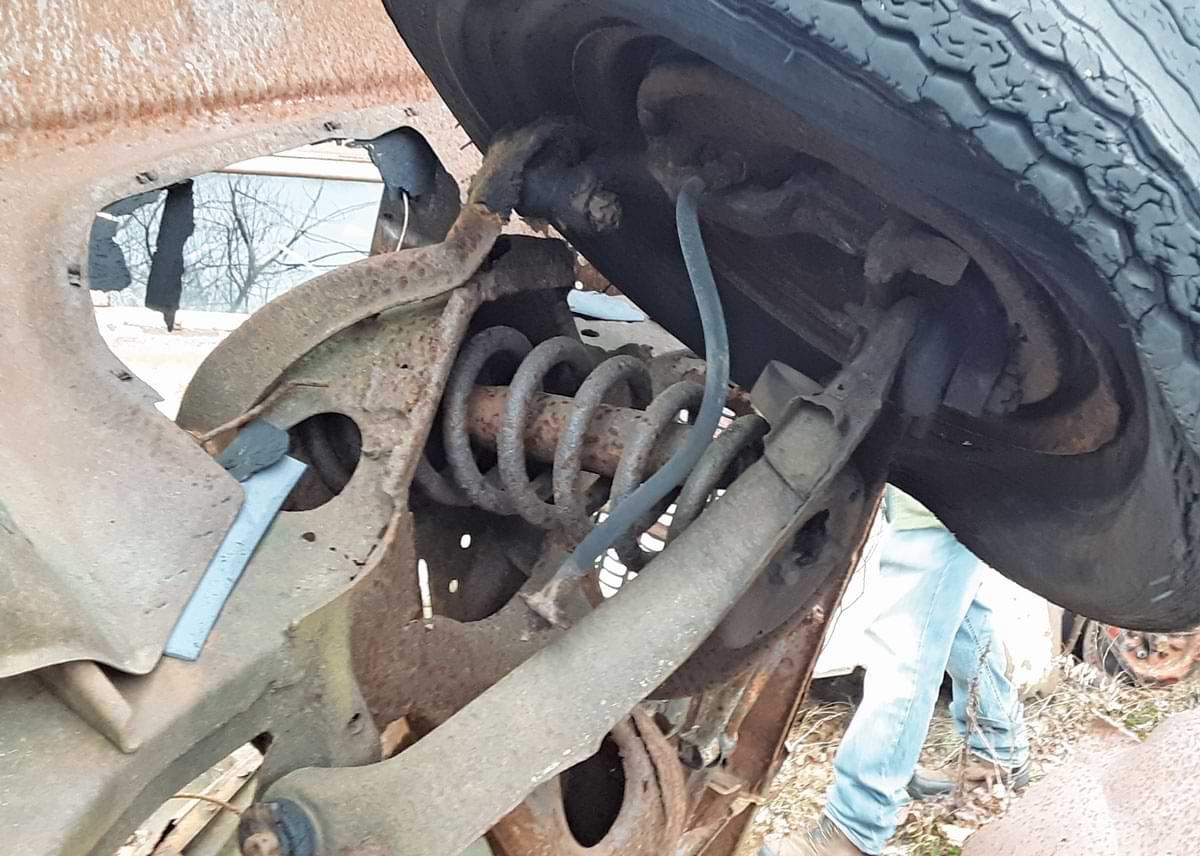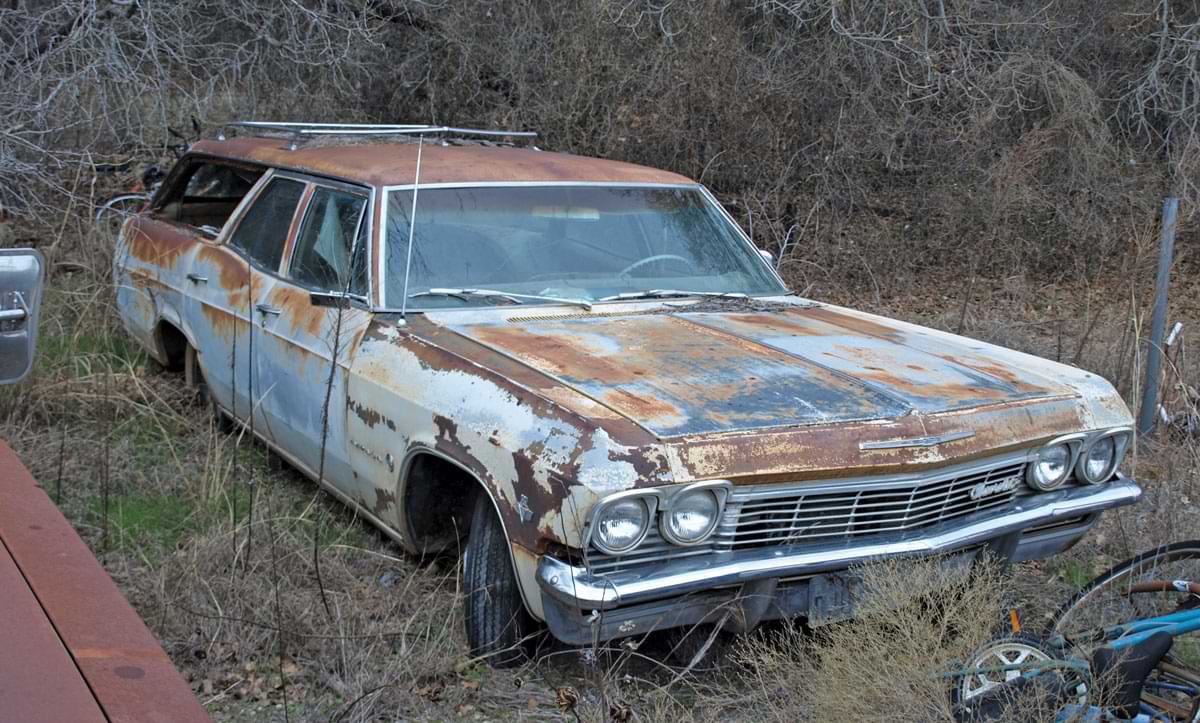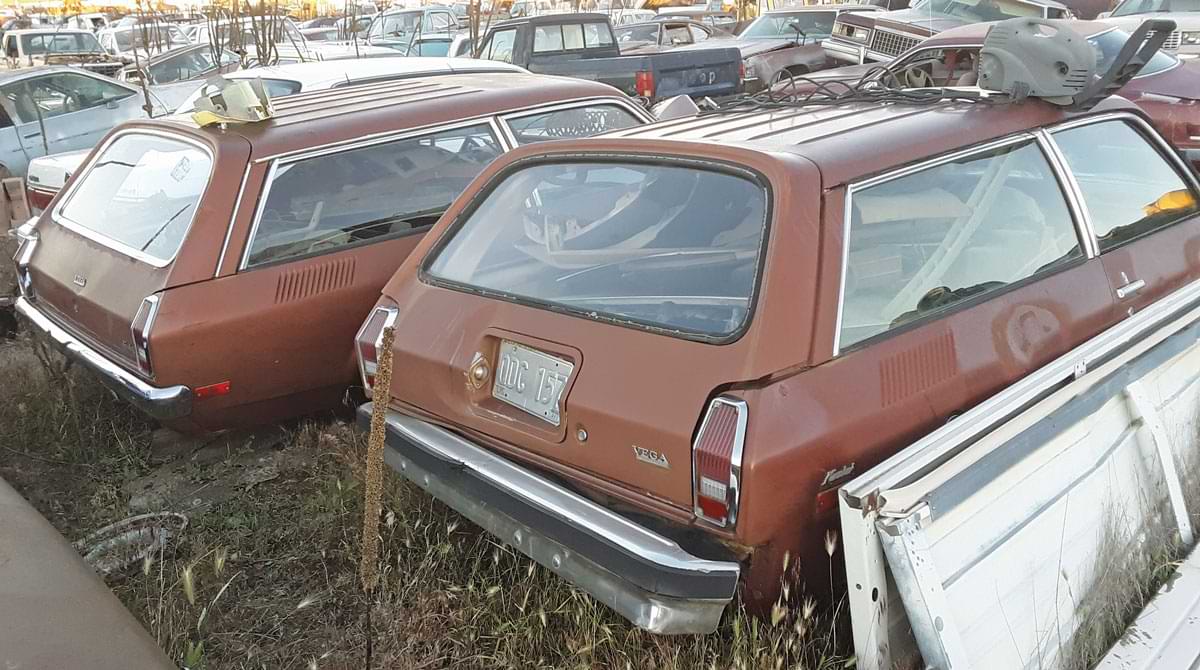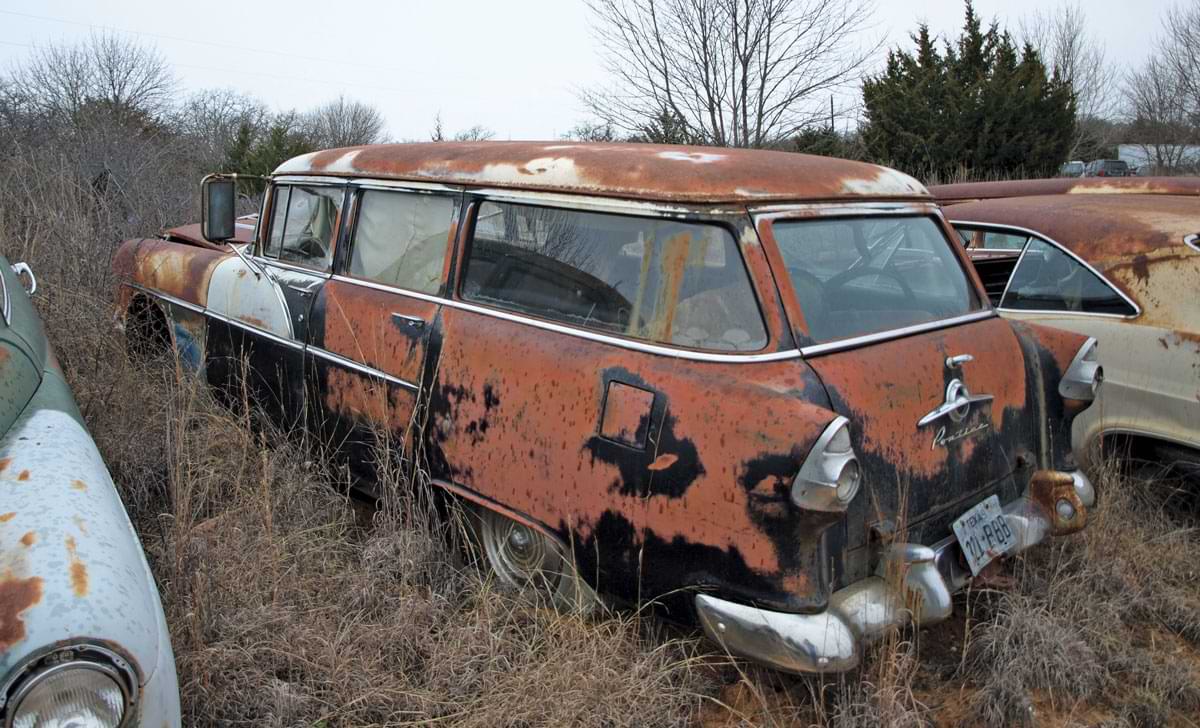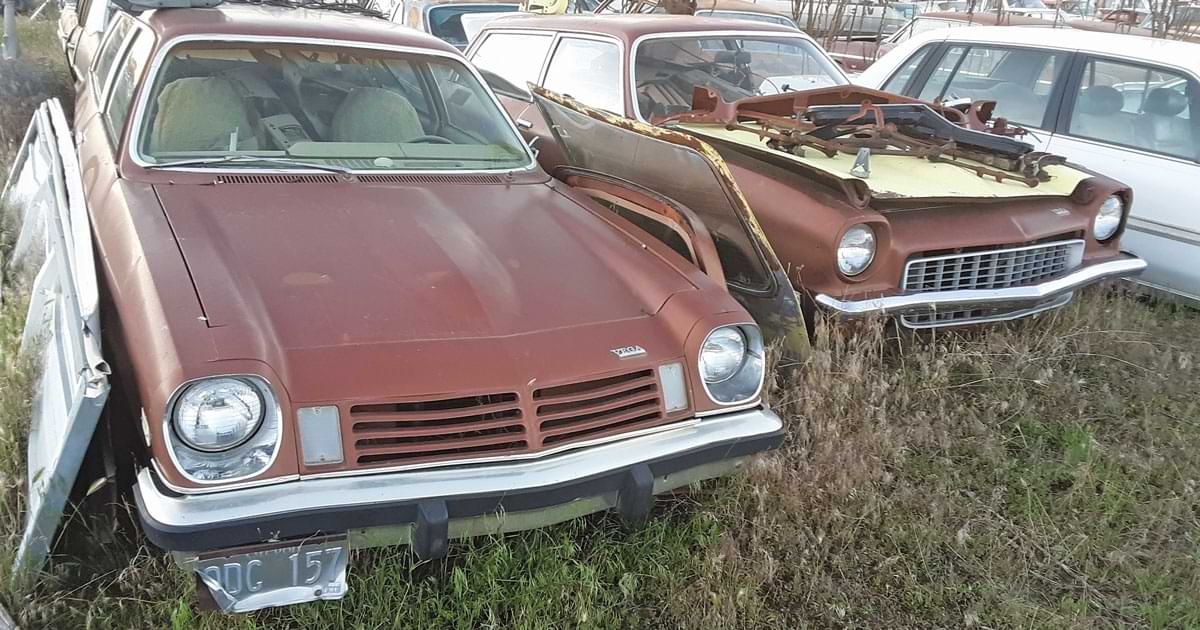 BOWTIE BONEYARD
BOWTIE BONEYARD

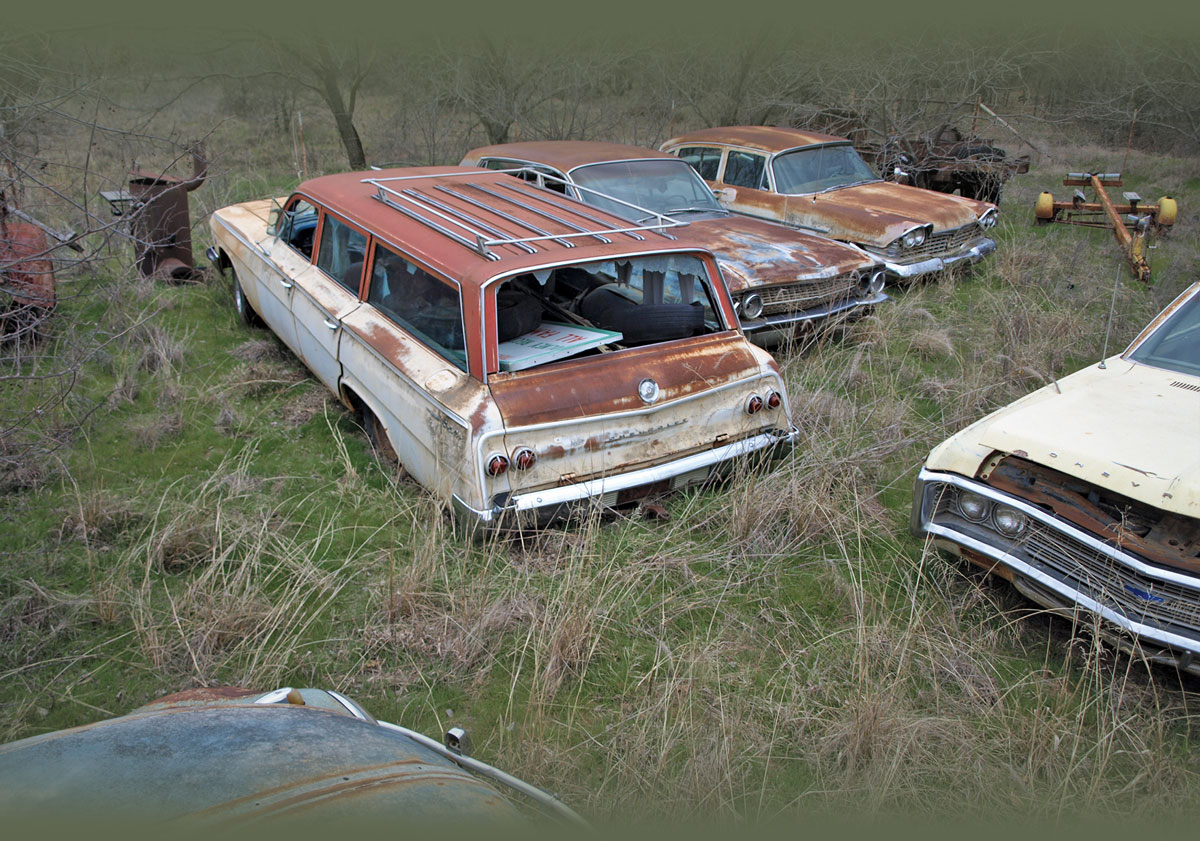
 Photography by The Author
Photography by The Authorf you grew up in the ’50s, ’60s, ’70s, or ’80s you remember how common station wagons were in everyday traffic. At every intersection, there they were. For the most part, there wasn’t much to get excited about except for the occasional 396, 427, or 454 front fender emblem. Or, when viewed from the rear, the presence of dual exhaust tips caught the eye of performance-oriented spectators–like us.
Unfortunately, most wagons share front sheetmetal with two-door and convertible models. So, when values of those models took off, wagons often lost their noses then went to the junkyard–despite having solid bodies from the cowl back. But since more efficient box-like minivans took over the chore of hauling the family beginning in 1984, within a decade the great American station wagon was about over.
This month, let’s take a look at some longroof Chevrolets discovered in junkyards from Texas to Massachusetts. The fact that these junkyards contained plenty of wagons speaks to the type’s widespread appeal–then as now.
